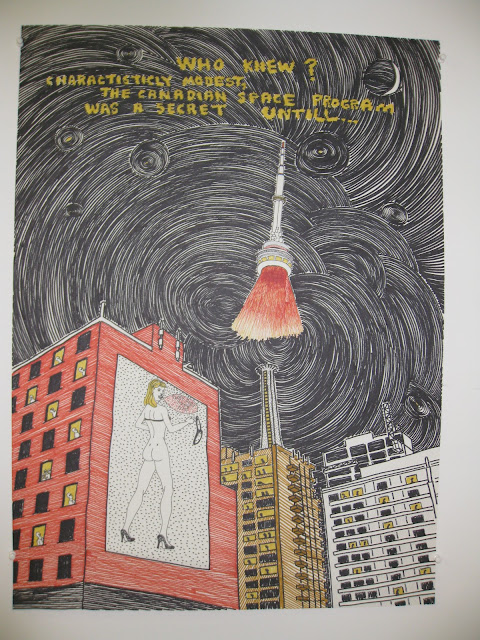Right around the period of Duchamp's "Ready Made," he did the painting "Nude Descending a Staircase" along with other, more conventional works of art. When he created "Ready Made," he wasn't quite sure what it was, and it took him a few years to figure out. Eventually, he gave it the title, "Ready Made." This idea of taking something from one context and putting it into a new context allows for a transformation of that thing. That transformation from life to art, along with the boundary between them, has fascinated artists such as Jasper Johns, John Cage, and many more, right up into contemporary artists who are working now in video and other media. It's really about the two categories of experience--life and art--and what the difference is and how this boundary interacts.
Another interesting thing about my sculpture and Marcel Duchamp's is that my sculpture is made out of wood--shaped wood, carved wood; wood that has weight and physical mass. Who inspired the use of wood? It was the other great modernist sculptor, Constantin Brancusi, who was friends with Duchamp. In 1913, Duchamp told Brancusi that painting was fucked--washed up. For him, painting was no more; a thing of the past. He also told him that nobody could make a sculptural form as beautiful as an aircraft's propeller. These conversations they had were very significant for both of them in terms of developing the simplistic form, reducing form down into its essence--just like a propeller--nothing extra, nothing added on. Just the essence of that form. Duchamp was a very talented man at living--traveling, living with different people. He even invented another persona as a woman. He could travel without a suitcase all over the world with just an extra shirt. He ate maybe an egg for the whole day and that kept him going. His work didn't really have much commercial value in the early teens and the 20's. How he supplemented his income is interesting because he kind of unofficially represented Brancusi and sold a lot of his sculptures in the United States as an underground dealer. So that's another connection that I tie into with this sculpture, because its based on the ideas inspired by Duchamp. However, the material and celebration of form, and the essence of form is a reference to Brancusi.



























